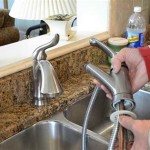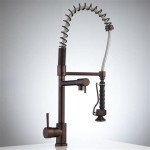How Much Does It Cost To Make An Outdoor Kitchen?
The desire to extend living spaces beyond the confines of the home has fueled a growing interest in outdoor kitchens. These spaces offer a unique blend of convenience and entertainment, allowing for meal preparation and social gatherings in the fresh air. However, before embarking on this project, it is crucial to understand the financial implications. The cost of building an outdoor kitchen can vary significantly depending on numerous factors, making careful planning and budgeting essential.
The final price tag associated with an outdoor kitchen is not a fixed amount; rather, it is a culmination of expenses tied to design, materials, appliances, labor, and potential site preparation. This article will explore these cost drivers in detail, providing a comprehensive overview of what to expect when budgeting for an outdoor kitchen project.
Key Cost Factors
Several key factors influence the overall cost of an outdoor kitchen. These factors can be broadly categorized into the following areas: the complexity of the design, the materials selected, the appliances integrated into the space, and the need for professional labor. Understanding each of these factors is crucial for creating a realistic budget and avoiding unexpected expenses.
Design Complexity: The design of the outdoor kitchen is a primary determinant of its cost. A simple design, featuring a grill and a small countertop, will naturally be less expensive than a complex design that includes multiple cooking surfaces, a bar area, and custom storage solutions. A complex design often necessitates more extensive site preparation, specialized materials, and increased labor hours, all of which contribute to a higher overall cost.
Material Selection: The choice of materials for the countertops, cabinetry, and flooring significantly impacts the final cost. High-end materials, such as granite countertops, stainless steel cabinetry, and natural stone flooring, are considerably more expensive than their more affordable counterparts, such as concrete countertops, prefabricated cabinets, and paver flooring. The long-term durability and aesthetic appeal of the selected materials should be weighed against their cost.
Appliance Integration: The appliances included in the outdoor kitchen represent a substantial portion of the overall cost. A basic outdoor kitchen typically includes a grill. However, many homeowners choose to incorporate additional appliances, such as a side burner, refrigerator, smoker, pizza oven, or even a fully functional outdoor sink. Each appliance adds to the cost, and higher-end models with advanced features command a premium price.
Labor Costs: Depending on the scope of the project and the homeowner's DIY capabilities, professional labor may be required for tasks such as site preparation, plumbing, electrical work, and the installation of countertops and appliances. Labor costs can vary significantly depending on the region and the experience of the contractors involved. Obtaining multiple quotes from qualified professionals is essential for securing competitive pricing.
Beyond these central cost drivers, other factors can influence the final price. Site preparation, including leveling the ground and installing proper drainage, can add to the expense. Permit fees and inspections are also required by many municipalities. The inclusion of decorative elements, such as lighting, landscaping, and patio furniture, will further increase the overall cost.
Estimating the Budget: Cost Ranges for Different Kitchen Types
To provide a clearer understanding of the potential costs involved, it is helpful to consider different types of outdoor kitchens and their associated price ranges. These ranges are estimates and can vary depending on the location, specific design choices, and material selections.
Basic Outdoor Kitchen: A basic outdoor kitchen typically includes a built-in grill, a small countertop area, and minimal storage. The structure is often constructed using concrete blocks or prefabricated components. The cost for a basic outdoor kitchen can range from $5,000 to $10,000. This range reflects the use of relatively inexpensive materials and minimal professional labor.
Mid-Range Outdoor Kitchen: A mid-range outdoor kitchen features a more comprehensive design, including a larger grill, a side burner, a refrigerator, and more extensive countertop and storage space. Materials used in a mid-range kitchen may include granite or tile countertops, stainless steel appliances, and custom-built cabinetry. The cost for a mid-range outdoor kitchen can range from $10,000 to $30,000. This range reflects the increased complexity of the design and the use of higher-quality materials and appliances.
High-End Outdoor Kitchen: A high-end outdoor kitchen is characterized by its elaborate design, premium materials, and top-of-the-line appliances. These kitchens often include multiple cooking surfaces, a bar area, a pizza oven, a smoker, and advanced features such as integrated lighting and sound systems. Materials may include exotic stone countertops, custom-built stainless steel cabinetry, and professional-grade appliances. The cost for a high-end outdoor kitchen can range from $30,000 to $100,000 or more. This range reflects the significant investment in design, materials, appliances, and professional labor.
These cost ranges are intended as a guideline. The actual cost of an outdoor kitchen can vary significantly depending on the specific design, materials, and appliances selected. It is essential to obtain detailed quotes from qualified contractors and suppliers to develop a realistic budget for the project.
Strategies for Cost Management
While the cost of building an outdoor kitchen can be substantial, there are several strategies that homeowners can employ to manage expenses and stay within budget. Careful planning, strategic material selection, and a willingness to handle some of the work independently can help reduce the overall cost.
Thorough Planning and Budgeting: The first step in managing costs is to develop a detailed plan and budget for the project. This plan should include a clear outline of the desired design, the materials to be used, the appliances to be included, and the labor required. A realistic budget should be established, taking into account potential cost overruns. Regularly track expenses and make adjustments as needed to stay within budget.
Strategic Material Selection: The choice of materials significantly impacts the overall cost of the outdoor kitchen. Opting for more affordable materials, such as concrete countertops or paver flooring, can significantly reduce expenses without sacrificing functionality. Exploring alternative materials and comparing prices from different suppliers can also help identify cost-saving opportunities. Consider using reclaimed or recycled materials where appropriate.
DIY Opportunities: Homeowners with DIY skills can save money by handling some of the work independently. Tasks such as site preparation, demolition, and the installation of paver flooring can be completed by homeowners with the necessary skills and tools. However, it is important to recognize limitations and to hire professionals for tasks that require specialized knowledge or expertise, such as plumbing and electrical work.
Prioritizing Features: Carefully consider which features are essential and which are optional. Prioritizing the most important features and eliminating those that are less essential can help reduce the overall cost. For example, opting for a smaller grill or foregoing a built-in refrigerator can save a significant amount of money. Add features later as budget allows.
Phased Construction: Consider building the outdoor kitchen in phases. Start with the essential components, such as the grill and a small countertop, and add additional features over time as budget allows. This approach allows homeowners to spread the cost of the project over a longer period and to avoid taking on a large financial burden all at once.
Seeking Multiple Quotes: Obtain multiple quotes from qualified contractors and suppliers before making any commitments. Comparing prices from different providers can help homeowners secure the best possible deals and avoid paying inflated prices. Be sure to verify the qualifications and experience of all contractors before hiring them.
Timing the Project: Depending on geographical location, building during the off-season can sometimes lead to cost savings. Contractors and suppliers may offer discounts during slower periods to attract business. However, consider the potential impact of weather conditions on the project schedule.
In addition to these strategies, homeowners should be prepared to make adjustments to their plans as needed. Unexpected issues may arise during the construction process, and it may be necessary to revise the design or materials to stay within budget. Flexibility and adaptability are essential for a successful outdoor kitchen project.
Ultimately, the cost of an outdoor kitchen is a reflection of the homeowner's vision, budget, and willingness to invest in creating a unique and functional outdoor living space. With careful planning, strategic material selection, and effective cost management strategies, it is possible to build an outdoor kitchen that meets both the homeowner's needs and their financial constraints.

2024 Cost To Build An Outdoor Kitchen Angi

What Does It Cost To Build An Outdoor Kitchen In 2024 Checkatrade

How Much Does An Outdoor Kitchen Cost Woodfield Outdoors

How Much Does An Outdoor Kitchen Cost Complete Guide

Cost Of Building An Outdoor Kitchen Fantastic Services

Cost To Build An Outdoor Kitchen In Houston

Outdoor Kitchens Custom Vs Prefab What Do They Cost
How Much Does It Cost To Build An Outdoor Kitchen Newair

How To Build Your Own Outdoor Kitchen For A Fraction Of The Cost Diy Design

How Much Does An Outdoor Kitchen Cost To Build
Related Posts








